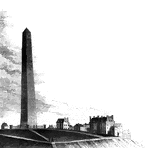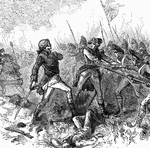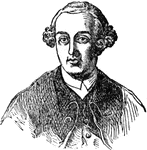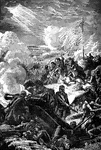Clipart tagged: ‘Bunker Hill’

Bunker Hill
A battle of the American Revolution named after the adjacent hill, which was the objective of both colonial…

Bunker Hill After the Battle
"This picture was drawn by a British engineer a few days after the battle. The view is from the north…

Bunker Hill Monument
"Bunker Hill Monument. This monument stands in the center of the grounds included within the breast-works…

John Callendar Saved by a British Officer
"In Sullivan's ranks is John Callendar, of Massachusetts. He commanded the artillery at Bunk Hill, and…

Burning of Charlestown
"This picture was drawn by a British engineer at the time of the battle. The view is from Copp's Hill,…

General Gouverneur K. Warren
General Warren fought in the Battle of Bunker's Hill during the American Revolution.

